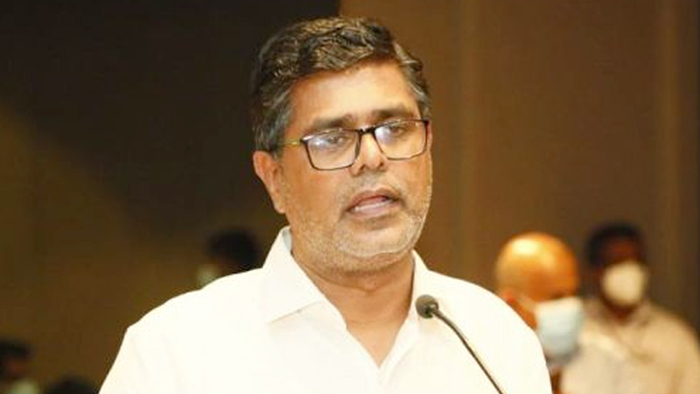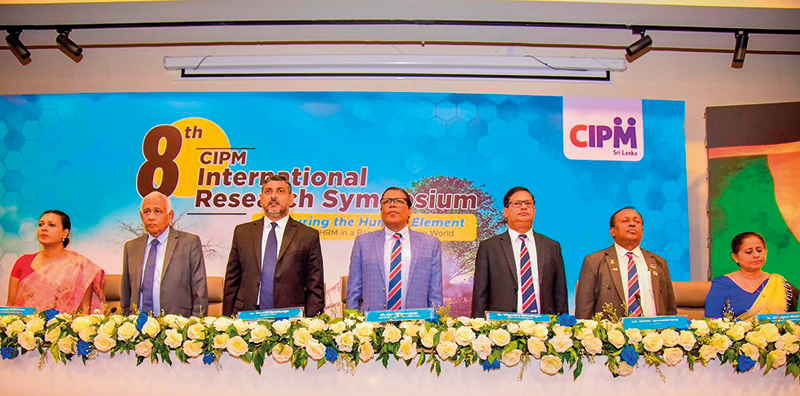News
Who is pouring oil on the flames in Sri Lanka?

By Feng Guoquan
Sri Lanka is in a dire situation. Known as the “Pearl of the Indian Ocean,” the country is facing the worst economic crisis since independence in 1948. Western media has taken this opportunity to hype up the so-called Chinese debt trap, alleging that Sri Lanka is on the verge of economic collapse because it was unable to repay its large loans from China. They add that the Belt and Road Initiative (BRI) has brought a heavy burden to the Sri Lankan economy, and constantly pitting the Sri Lankan government and its people against China, while turning a blind eye to those who are really behind all this.
Caught fire by accumulated debt
There are many causes for Sri Lanka’s economic crisis, among which the foreign exchange crisis is the main factor. Since its independence, Sri Lanka has suffered from internal and external troubles. It has been carrying trade deficits and relying on loans for years. Due to the combined impact of a string of terrorist attacks in April 2019, the COVID-19 pandemic and the Russia-Ukraine conflict, the country’s pillar industries including tourism, overseas remittances, tea and garments have been hit hard and it has rapidly drained its reserves.
What’s worse, Sri Lanka introduced a low tax regime in late 2019, which caused the government a loss of more than $1.4 billion in revenue, further limiting its capability to purchase foreign exchange.
While foreign exchange earnings have plummeted, Sri Lanka’s import payments have continuously increased. Sri Lanka’s production materials and daily necessities are highly dependent on imports, and the armed conflict between Russia and Ukraine has triggered a surge in global commodity prices. Taking energy as an example, 60 percent of Sri Lanka’s electricity is generated from coal and oil, both of which need to be imported. The global oil price increased by six-fold from $18 a barrel in April 2020 to above $100 a barrel now.
At the beginning of 2021, the Sri Lankan government banned the import of chemical to prevent the outflow of foreign exchange, resulting in large-scale crop failures, and the government had to replenish food reserves from abroad, further exacerbating the shortage of foreign exchange.
Sri Lanka’s foreign exchange reserves have plummeted by about 70 percent in the past two years. Its reserves stand at around $1.9 billion at the end of March, while its foreign debt obligations for this year exceed $7 billion. On April 12, the Sri Lankan government officially announced the temporary suspension of foreign debt payments, defaulting on its $50.7 billion foreign debt. On May 19, the government announced that it had failed to repay a total of $78 million in debt, which marked the nation’s first sovereign debt default since it gained independence.
The U.S.-led West have been pouring oil on the flames after setting fire
Although Sri Lanka has been in debt for many years, it has previously maintained a good record of foreign debt repayment. The Russia-Ukraine conflict, which was caused by the U.S.-led Western intervention, had a very serious impact on Sri Lanka’s economy, which was already in bad shape, and leading to its default. It is the hegemony and the greed of capital of the U.S.-led West that are the root causes of the economic crisis faced by Sri Lanka and other developing countries.
The mounting sanctions imposed on Russia by the U.S.-led West have been pushing global food and energy prices to new heights, and there are also restrictions on Russian financial and aviation sectors. The food prices surged in Sri Lanka due to soaring prices of wheat and corn triggered by the Russia-Ukraine conflict.
Sri Lanka exports about $150 million of tea and other commodities to Russia annually. However, as more and more Russian banks are banned from the SWIFT network, Sri Lanka was unable to obtain foreign exchange by exporting to Russia. In January this year, Russia was Sri Lanka’s largest source of tourists, but in March, the state-run national carrier of Sri Lanka suspended its flights to Russia due to the Western sanctions.
In terms of debt structure, most of Sri Lanka’s debts are in the form of international sovereign bonds, and the Asian Development Bank and Japan are its main lenders. According to the Central Bank of Sri Lanka data, as of October 2021, Sri Lanka’s international sovereign bonds reached $11.82 billion, accounting for 34.1 percent of total external debt. In terms of bilateral loans, Japan and India ranked first and second, with $3.54 billion (10.2 percent) and $790 million (2.3 percent) respectively, higher than China.
China’s bilateral loans to Sri Lanka are not the largest. Even with financial market loans (Exim Bank of China) included, it only accounts for 10 percent, and most of the loan interest rates are much lower than the capital markets, among which over 60 percent are concessional loans, and the remaining 40 percent are interest-free loans. So Sri Lanka’s debt repayment problems have very little to do with Chinese loans.
In fact, Sri Lanka is not the only country that suffers from the economic crisis. The Federal Reserve and other major central banks have raised interest rates to quell inflation, which drives up borrowing costs and may bring debt crisis to many developing countries. Turmoil triggered by rising food and energy prices is already gripping countries like Egypt, Tunisia and Peru. Scarcities of food, energy and finance put more than 70 countries at risk of following Sri Lanka into default, says United Nations, according to a recent report by the Wall Street Journal.
The trap of so-called Chinese debt trap
In recent years, governments and media of the U.S.-led West have tied the concept of the “debt trap” to China as a weapon to tarnish China’s reputation and the Belt and Road Initiative in order to counter China’s promotion of BRI, maintain their political and economic hegemony, and prevent the developing countries from participating in the BRI.
The Hambantota Port is a most cited case by the U.S.-led West in hyping up the “Chinese debt trap.” It is falsely claimed that China used the port to drag Sri Lanka deep in debt and would transform it into a military base in the future. But the fact is that the Hambantota Port added $1.12 billion of foreign exchange reserves for Sri Lanka to repay some short-term foreign debts. What’s more, the Hambantota Port is difficult to use as a military base due to water depth limitations, and the Sri Lankan government has explicitly prohibited the use of the Hambantota Port as a foreign military base.
On the contrary, India has recently partially acquired the Trincomalee Port situated on the eastern coast of Sri Lanka, which is a large natural port from a military point of view and used to be a strategic oil terminal for the British army during World War II. Because the United States intended to build an “economic corridor” and highway from Trincomalee to Colombo through the Millennium Challenge Corporation (MCC), which is obviously for military purposes, the United States, India and other countries have played deaf and dumb.
As a close neighbor of Sri Lanka, China has been sincerely helping Sri Lanka develop its economy. Instead of causing any crisis, China has over the years provided selfless help and firm support to Sri Lanka in socio-economic development. Especially since the onset of the COVID-19 pandemic, China and Sri Lanka have supported each other and pulled through together, writing a new chapter of China-Sri Lanka friendship. Chinese Premier Li Keqiang noted that China empathizes with Sri Lanka for its difficulties and challenges, and China is ready to provide much-needed livelihood assistance for Sri Lanka within its capacity.
The Sri Lankan government has explicitly refuted the myth of “Chinese debt trap” time and time again. Recently, Ranil Wickremesinghe, Sri Lanka prime minister and leader of the United National Party, expressed his gratitude to China for assisting Sri Lanka in overcoming difficulties in all aspects and stressed that the government will continue to attach great importance to developing ties with China and push forward BRI projects in the country, accelerate the development of the Colombo Port City, Hambantota Port and other major cooperation projects, make every effort to protect the safety of Chinese institutions and personnel in Sri Lanka.
The international community, especially the developing countries, need to be wary of the trap of “Chinese debt trap” set by the U.S.-led West
,which is a systematic move orchestrated by the U.S. to obstruct the BRI. Countries should endeavor to safeguard their national security and development interests, strengthen international cooperation, including those under the BRI, increase their representation and voice in global economic governance, and promote the establishment of a more just and reasonable international economic order. For developing countries including China, underdevelopment is the biggest trap, and the political, economic, military, and cultural hegemony of the U.S.-led West is the real trap.
(Writer Feng Guoquan is a commentator on international affairs. The article was first published by The People’s Daily, in Chinese, on June 11, 2022. The article reflects the author’s views, and not necessarily those of CGTN (China Global Television Network.)
News
US sports envoys to Lanka to champion youth development

The U.S. Embassy in Colombo welcomed the U.S. Sports Envoys to Sri Lanka, former National Basketball Association (NBA) and Women’s National Basketball Association (WNBA) players Stephen Howard and Astou Ndiaye, from June 8 through 14.
The Public Diplomacy section of the U.S. Embassy said that it would launch a weeklong basketball program intended to harness the unifying power of sports, made possible through collaboration with Foundation of Goodness and IImpact Hoop Lab.
While in Sri Lanka, Howard and Ndiaye, both retired professional basketball players, will conduct a weeklong program, Hoops for Hope: Bridging Borders through Basketball. The Sports Envoys will lead basketball clinics and exhibition matches and engage in leadership sessions in Colombo and Southern Province for youth aged 14-18 from Northern, Uva, Eastern and Western Provinces, offering skills and leadership training both on and off the court. The U.S. Envoys will also share their expertise with the Sri Lanka Basketball Federation, national coaches, and players, furthering the development of basketball in the country. Beyond the clinics, they will collaborate with Sri Lankan schoolchildren to take part in a community service project in the Colombo area.
“We are so proud to welcome Stephen and Astou as our Sports Envoys to Sri Lanka, to build on the strong people-to-people connections between the United States and Sri Lanka,” said U.S. Ambassador Julie Chung. “The lessons that will be shared by our Sports Envoys – communication, teamwork, resilience, inclusion, and conflict resolution – are essential for leadership development, community building, equality, and peace. The U.S. Sports Envoy program is a testament to our belief that sports can be a powerful tool in promoting peace and unity.”
News
Rahuman questions sudden cancellation of leave of CEB employees

SJB Colombo District MP Mujibur Rahuman in parliament demanded to know from the government the reasons for CEB suspending the leave of all its employees until further notice from Thursday.
MP Rahuman said that the CEB has got an acting General Manager anew and the latter yesterday morning issued a circular suspending leave of all CEB employees with immediate effect until further notice.
“We demand that Minister Kanchana Wijesekera should explain this to the House. This circular was issued while this debate on the new Electricity Amendment Bill was pending. There are many who oppose this Bill. The Minister must tell parliament the reason for the urge to cancel the leave of CEB employees,” the MP said.However, Speaker Mahinda Yapa Abeywardena prevented Minister Wijesekera responding to the query and said that the matter raised by MP Rahuman was not relevant.
News
CIPM successfully concludes 8th Annual Symposium

The Chartered Institute of Personnel Management (CIPM) successfully concluded the 8th Annual CIPM Symposium, which took place on 31st May 2024. Themed “Nurturing the Human Element—Redefining HRM in a Rapidly Changing World,” the symposium underscored the pivotal role of human resource management (HRM) in today’s dynamic global landscape. Since its inception in 1959, CIPM has been dedicated to advancing the HR profession through education, professional development, and advocacy, solidifying its position as Sri Lanka’s leading professional body for HRM.
Ken Vijayakumar, the President of the CIPM, graced the occasion as the chief guest. The symposium commenced with the welcome address by the Chairperson, Prof. Arosha Adikaram, followed by the Web Launch of the Symposium Proceedings and Abstract Book by the CIPM President. The event featured distinguished addresses, including a speech by Chief Guest Ken Vijayakumar, President of CIPM, and an address by Guest of Honor Shakthi Ranatunga, Chief Operating Officer of MAS Holdings Pvt. Ltd., Sri Lanka.
The symposium also featured an inspiring keynote address by Prof. Mario Fernando, Professor of Management and Director of the Centre for Cross Cultural Management (CCCM) at the University of Wollongong, Australia.
Vote of Thanks of the inauguration session was delivered by Dr. Dillanjani Weeratunga, Symposium Co-chair.
The symposium served as a comprehensive platform for researchers to present their findings across a wide range of critical topics in HRM. These included Cultural Diversity and Inclusion, Talent Development and Retention, Ethical Leadership and Corporate Social Responsibility, Adapting to Technological Advancements, Mental Health and Well-being at Work, Global Workforce Challenges, Employee Empowerment, and Reskilling and Upskilling.
The plenary session was led by Prof. Wasantha Rajapakse. Certificates were awarded to the best paper presenters during the valedictory session, followed by a vote of thanks delivered by Kamani Perera, Manager of Research and Development.
The annual symposium of CIPM was a truly inclusive event, attracting a diverse audience that spanned undergraduates, graduates, working professionals, research scholars and lecturers. This widespread interest highlights the symposium’s significance in the field of HRM, offering a unique opportunity for everyone to network and learn from scholarly brains.The CIPM International Research Symposium was sponsored by Hambantota International Port, Sri Lanka Institute of Information Technology (SLIIT), E B Creasy & Co. PLC, and Print Xcel Company.












